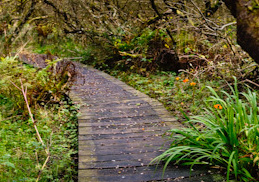About
Site Directory
Copyright © 2025 www.isleofman.com
All Right Reserved
powered by 
Copyright © 2025 www.isleofman.com
All Right Reserved
powered by 


Located in Arbory Parish this reserve was originally part of Ballachrink.
The site of Earystane was originally part of Ballachrink ("hill farm" in Manx Gaelic) and was sold to Arbory Parish Commissioners for use as a tip. Tipping ceased about thirty years ago; half the site had been used. The wetter lower lying part of the site, which was not tipped on, has been colonised by willows. Such wet areas are named Moaney (ie peaty in Manx gaelic) in the south but would be called Curragh in the north of the island. The tip surface became colonised by grassland and ruderal vegetation such as nettles and rosebay willowherb with encroaching scrub, particularly bramble and gorse. Arbory Commissioners planted some trees in recent years.
In 1996 Manx Wildlife Trust was awarded a grant by Barclays SiteSavers Programme to turn the tip into a nature reserve and public amenity. A path, suitable for wheelchairs, was made leading to a bird hide overlooking the willows and beyond to the surrounding countryside; a boardwalk was constructed through the willow carr and trees and shrubs were planted in areas of bracken. Seventy volunteers spent over 450 hours working to transform the site. The boardwalk and hide were the first of their kind in the south of the island.
Nearly one hundred plant species have been recorded so far on the site. The meadow areas support a variety of grasses together with wild flowers such as knapweed, birdsfoot trefoil and clovers. The wetland is dominated by grey willow and supports a diversity of woodland and wetland plants such as ground ivy, bluebells, marsh marigold, marsh woundwort, marsh thistle, rushes and heath spotted orchid. Many willow branches are festooned with mosses and lichens.
Common birds such as blue and great tit, robin, blackbird, wren and pheasant are often present. Hen harriers are regularly seen hunting in the surrounding countryside and raven and chough frequent the area. Migratory birds such as willow warbler and chiffchaff can be heard more easily than seen when they arrive in the spring. In autumn and winter the two migratory thrushes, redwing and fieldfare, may be seen flying overhead and feeding in adjacent fields.
The grassland areas are managed as small hay meadows, the vegetation being cut in August, after the wild flowers have set seed, and the cuttings or "hay" removed. The recently planted trees and shrubs require maintenance until they are well established and can survive unassisted. The willow area is generally being left to develop naturally although non-native species, particularly Japanese knotweed and sycamore, will need control to prevent them taking over and replacing native species.
Grid ref SC235715. Follow the A7 from Ballabeg or Ballagawne and turn at Colby onto the A27 leading north uphill towards Ronague and the Round Table. Pass Colby Glen on your left and at the sharp right-hand bend beyond the last houses, a road sign points to Earystane on the left. The wooden entrance gate to the reserve is on the right hand side of this minor road.
To avoid causing a traffic hazard, or damage to road verges, do not park where the road is narrow, on the Earystane road or in field gateways. Cars should be parked in the wide section of the A27 two hundred metres east of the site, near the waterworks.